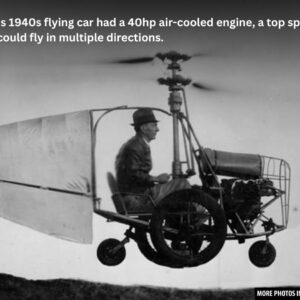In 1931, a groundbreaking piece of engineering took to the tracks of Germany’s Berlin to Hamburg railway, making a mark in transportation history. Known as the Schienenzeppelin, or the “Zeppelin on Rails,” this propeller-powered train promised to revolutionize travel with its unparalleled speed. But while it set a world record and captured the imagination of many, it would ultimately remain a prototype, dismantled just before the outbreak of World War II.
Schienenzeppelin’s Record-Breaking Speed
On June 21, 1931, the Schienenzeppelin achieved what many thought impossible: it set a new land-speed record for railways. Reaching a speed of 143 miles per hour (230 km/h) on the 180-mile journey from Berlin to Hamburg, it outpaced any existing train of the time. The journey, which took just 1 hour and 44 minutes, was nearly half the time required by the fastest trains, which averaged about three hours and 15 minutes for the same distance.
This impressive feat remained unbeaten for 23 years. The speed, matched only by advanced technology, captured the world’s attention and highlighted the potential for faster, more efficient transportation. In fact, Schienenzeppelin’s record still stands as the fastest speed ever recorded by a petrol-powered train.
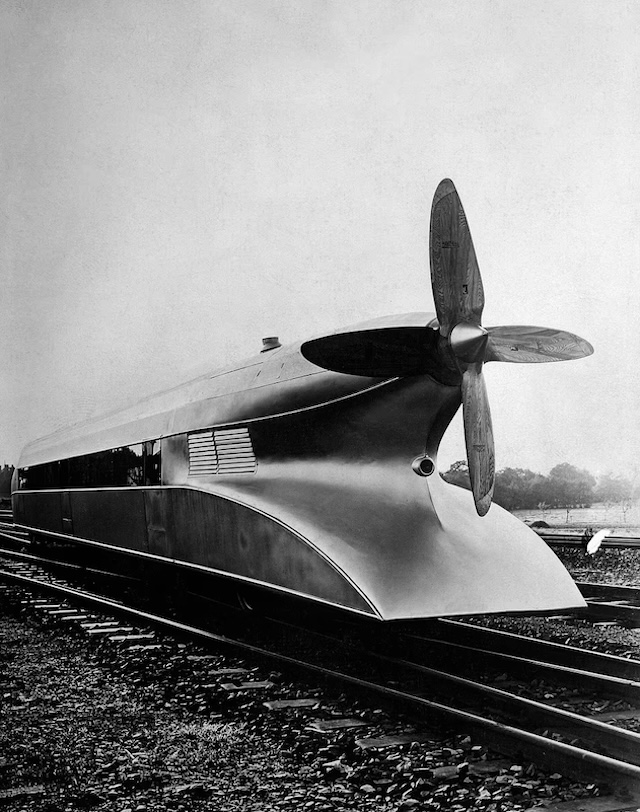
Video
Watch this video to discover the Propellertriebwagen Kruckenberg Schienenzeppelin from 1930, part 1!
Innovative Design and Features

At the heart of this remarkable vehicle was a design by German aircraft engineer Franz Kruckenberg. The Schienenzeppelin was not just a fast train—it was an example of aeronautical engineering applied to rail travel. The train was powered by a propeller-driven engine, initially with four blades and later switched to a two-blade version, connected to a 600 horsepower engine. This unconventional propulsion system was inspired by the zeppelins that were popular in the early 20th century.
The Schienenzeppelin had a futuristic appearance, complete with a sleek and streamlined body that minimized air resistance. Inside, it was equipped with five compartments designed for passengers’ comfort, including seating areas, a baggage room, and even a smoking area. There was also a restroom, catering to the needs of long-distance travelers. The train could carry 40 passengers, providing a unique and luxurious travel experience.
Initially, the Schienenzeppelin was powered by two petrol aircraft engines, but later it was upgraded to a single BMW 12-cylinder engine for improved performance. It was a combination of innovation and daring, setting the stage for future advances in transportation.
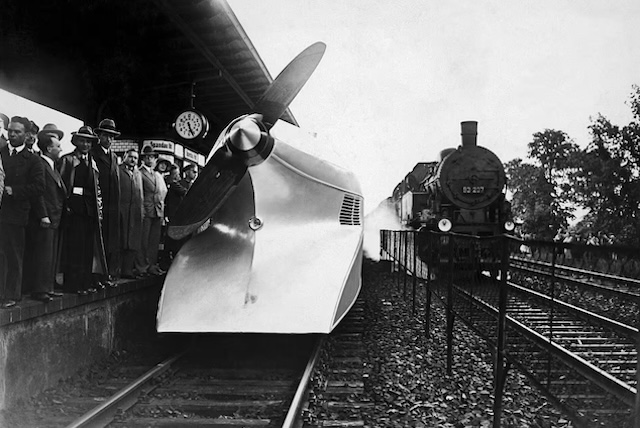
The Initial Success and Public Fascination
Before its record-breaking run, the Schienenzeppelin was subjected to several tests. In October 1930, the train reached a speed of 93 mph on a trial run between Hanover and Celle, carrying 40 passengers. During this trial, a journalist described the experience as “extraordinarily fast,” noting that within moments of starting, the train accelerated quickly from a standstill.
On its record-breaking journey in June 1931, the train was accompanied by an airplane following the route. The plane, though initially behind, eventually caught up to the train as it neared its destination. Passengers on board included several women and an official from the German State Railway, adding an air of prestige to the achievement.
Despite these successes, the Schienenzeppelin was never mass-produced. Reliability and safety concerns, particularly regarding the propeller’s safety, meant that the train was not viable for widespread use. Though it demonstrated incredible speed, the technology was not yet ready for mass transit.
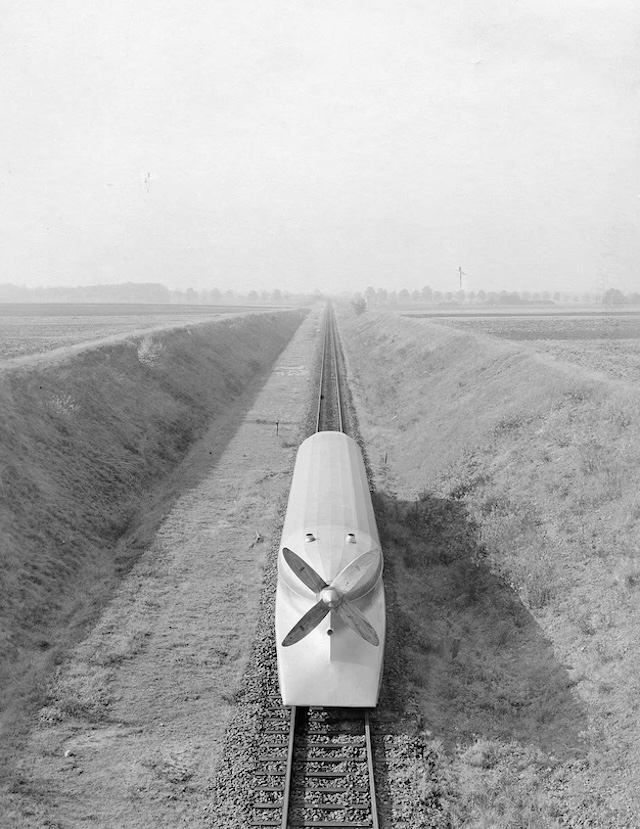
The End of an Era: Schienenzeppelin’s Demise
With the onset of World War II, the Schienenzeppelin’s story came to an abrupt end. In 1939, the prototype was dismantled, and its materials were repurposed for use in Germany’s war efforts. What remained of this remarkable piece of engineering was taken apart, and the vision of a fast, propeller-driven train was set aside as the country shifted focus to the war.
Though it never reached mass production, the Schienenzeppelin’s legacy lived on in the minds of transportation enthusiasts and engineers. The speed record it set in 1931 stood unchallenged for more than two decades, and it still holds the record for the fastest petrol-powered train to this day.
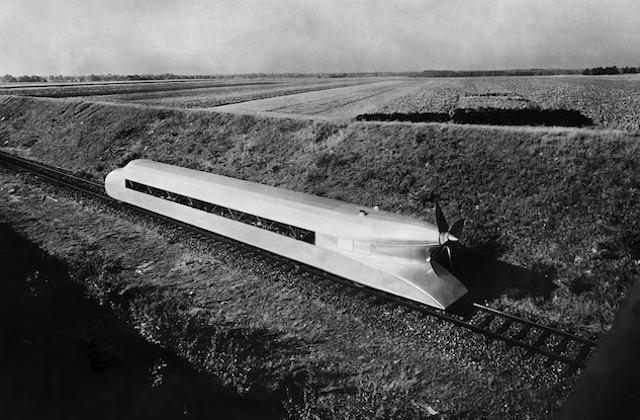
The Zeppelin Connection: Influence of Zeppelins on Travel
The Schienenzeppelin was not an isolated innovation. In the early 20th century, zeppelins were a prominent form of air travel, frequently used for long-distance journeys. The most famous of these was the Graf Zeppelin, which made a historic circumnavigation of the globe in 1929 with British journalist Grace Marguerite Hay Drummond-Hay on board, making her the first woman to fly around the world.
However, zeppelins were not without controversy. The safety of hydrogen-filled zeppelins was increasingly questioned, particularly after the crash of the British R101 airship in 1930. The disaster was a precursor to the infamous Hindenburg tragedy in 1937, which ultimately marked the end of the Zeppelin era.
In this context, the Schienenzeppelin represented a fascinating bridge between the era of zeppelins and the future of rail transportation. While its time on the tracks was short-lived, it embodied the spirit of innovation and experimentation that defined much of early 20th-century engineering.

A Forgotten Legacy
Today, the Schienenzeppelin remains a footnote in the history of transportation, overshadowed by the rapid advancement of modern high-speed trains. However, its brief moment in the spotlight serves as a testament to the ambition and ingenuity of its creators. By pushing the boundaries of what was possible, the Schienenzeppelin helped pave the way for the high-speed trains that we use today.
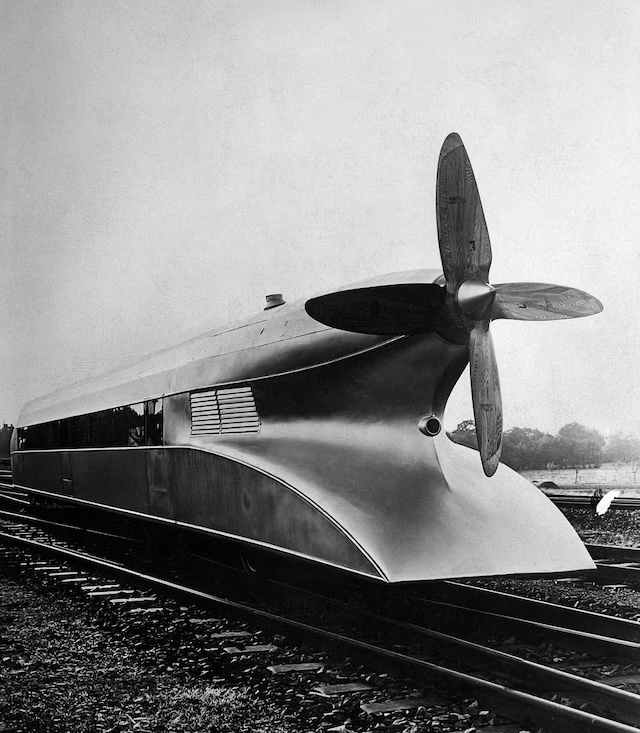
Although the Schienenzeppelin never entered mass production, its story is a compelling one—a story of technological daring, speed, and the relentless drive for progress that continues to shape transportation today. The “Zeppelin on Rails” may have been dismantled, but its legacy lives on as an enduring symbol of early 20th-century innovation.
Video
Watch this video for part 2 of the Propellertriebwagen Kruckenberg Schienenzeppelin from 1930 and explore its fascinating design!


